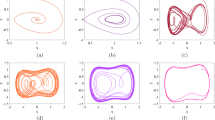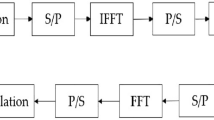Abstract
Underwater connectivity has been a leading field of study in undersea navigation, deep-sea investigation and autonomous underwater vehicle control (AUVs). Because of the low attenuation (signal reduction) of sound in water, acoustic communication is the most versatile and broadly used tool in underwater network. Factors such as long propagation delay, restricted usable bandwidth, large Doppler range, time-varying channel conditions, pressure and various salinity conditions make the application of the underwater acoustic communication (UWAC) system difficult. Underwater naval monitoring and underwater exploration are the basic uses of Underwater Wireless Sensor Networks (UWSN). The outline of sensor networks has been resurrected into a new age of global physical object tracking with the latest advancement of innovation. This advances in design paved the way for new unopened insider information to be revealed in the area of underwater ecosystems, deep water conditions and discovery of ice sheets. This work provides a proficient packet transmitting technique in a selective frequency to increase the coverage, synchronisation and connectivity between sensor AUVs that are under secluded ocean contour observation. The theoretical model is used to represent the complex dynamics in the sea. Taking into account all the channel properties below the sea, the channel model was created. The AUVs are connected to a cluster-based network and the 3-D location of the AUVs is transmitted using an appropriate depth-based cluster-based routing protocol (DB-CBRP). Through choosing the optimal frequency for the transmission of routing packets, the network's total life is extended with the least delay in routing. As a result of its strength against overly reduced transmission capability and recurrence reuse, the CBRP approach is used to restrict channel impairments. The simulation results of the proposed algorithm reveal that the surveillance AUVs have greater communication, coverage and share their position with each other.














Similar content being viewed by others
References
Akyildiz I, Pompili D, Melodia T (2005) Underwater acoustic sensor networks: research challenges. Elsevier Ad hoc Netw 3(3):257–279
Bhattacharjya K, Alam S, Debashis D (2020) CUWSN: energy efficient routing protocol selection for cluster based underwater wireless sensor network. Microsyst Technol Spring 25(8)
Chitre M, Shahabudeen S, Stojanovic M (2008) Underwater acoustic communications and networking: recent advances and future challenges. Mar Technol Soc J 42:1
Gao Q, Zou H (2010) Improving probabilistic coverage and connectivity in wireless sensor networks: cooperation and mobility. Int Conf Wireless Commun Signal Process (WCSP) 2010:1–6
Goyal N, Dave M, Verma AK (2019) Protocol stack of underwater wireless sensor network: classical approaches and new trends. Wireless Pers Commun 104(3):995–1022
Hou Y, Wang H, Liang J, Pei C (2009) A cross-layer protocol for event-driven wireless sensor networks. In: 1st International conference on information science and engineering, Nanjing, pp 3926–3929. doi: https://doi.org/10.1109/ICISE.2009.17
Liu L (2011) A deployment algorithm for underwater sensor networks in ocean environment. World Sci J Circ Syst Comput 20(6):1051–1066
Liu L, Liu Y, Zhang N (2013) A complex network approach to topology control problem in underwater acoustic sensor networks. IEEE Trans Parallel Distrib Syst 1:1–11
Liu L, Ningshen Z, Ye L (2015) Topology control models and solutions for signal irregularity in mobile underwater wireless sensor networks. J Netw Comput Appl 51.
L. Liu, J. Du, D. Guo, Error beacon filtering algorithm based on K-means clustering for underwater wireless sensor networks. In: 8th IEEE International Conference on Communication Software and Networks (ICCSN), Beijing, pp 435–438. doi: https://doi.org/10.1109/ICCSN.2016.7587196
Logeshwaran R, Rajalakshmi P (2015) Development of cluster based routing protocol in underwater acoustic wireless network. IJETCSE 12(2)
Mukhtiar A, Mazleena S, Channa MI (2018) Routing protocols based on protocol operations for underwater wirelesssensor network: a survey. Egypt Inf J 19(1):57–62
Nayyar AB (2018) Analysis of simulation tools for underwater sensor networks (UWSNs). In: International conference on innovative computing and communications. Lecture Notes in Networks and Systems, vol 55. Springer, Singapore. https://doi.org/10.1007/978-981-13-2324-9_17
Ojha T, Misra S (2013) MobiL: a 3-dimensional localization scheme for mobile underwater sensor networks. In: National conference on communications
Rajalakshmi P, Logeshwaran R (2015) Performance analysis of cluster head selection routing protocol in underwater acoustic wireless sensor network. In: 2nd IEEE international conference on electronics and communication systems (ICECS), pp 1005–1011
Sivagami L, Martin Leo Manickam J (2016) Cluster-based MAC protocol for collision avoidance and TDMA scheduling in underwater wireless sensor networks. Comput J 59(10):1527–1535
Tran KTM, Oh SH (2014) A data aggregation based efficient clustering scheme in underwater wireless sensor networks. Ubiquitous Inf Technol Appl Lect Notes Electr Eng 280:541–548
Tyagi S, Kumar N (2013) A systematic review on clustering and routing techniques based upon LEACH protocol for wireless sensor networks. J Netw Comput Appl 36(2)
Zhang C, Bai X, Teng J et al (2010) Constructing low-connectivity and full-coverage three dimensional sensor networks. IEEE J Sel Areas Commun 28(7):984–993
Zhang J, Cai M, Han G, Qian Y, Shu L (2020) Cellular clustering-based interference-aware data transmission protocol for underwater acoustic sensor networks. IEEE Trans Veh Technol 69(3):3217–3230
Zhu F, Wei J (2018) An energy efficient routing protocol based on layers and unequal clusters in underwater wireless sensor networks. J Sens 2018:1–10
Acknowledgements
This research work was carried out in Underwater Acoustic Research Lab, Department of Electronics and Communication Engineering, Sri Sivasubramaniya Nadar College of Engineering, Chennai, India. The author would like to express his sincere gratitude for providing the necessary facilities to carry out this research work.
Author information
Authors and Affiliations
Corresponding author
Additional information
Publisher's Note
Springer Nature remains neutral with regard to jurisdictional claims in published maps and institutional affiliations.
Rights and permissions
About this article
Cite this article
Rajasekaran, L., Santhanam, S.M. Optimum frequency selection for localization of underwater AUV using dynamic positioning parameters. Microsyst Technol 27, 4291–4303 (2021). https://doi.org/10.1007/s00542-021-05222-3
Received:
Accepted:
Published:
Issue Date:
DOI: https://doi.org/10.1007/s00542-021-05222-3




